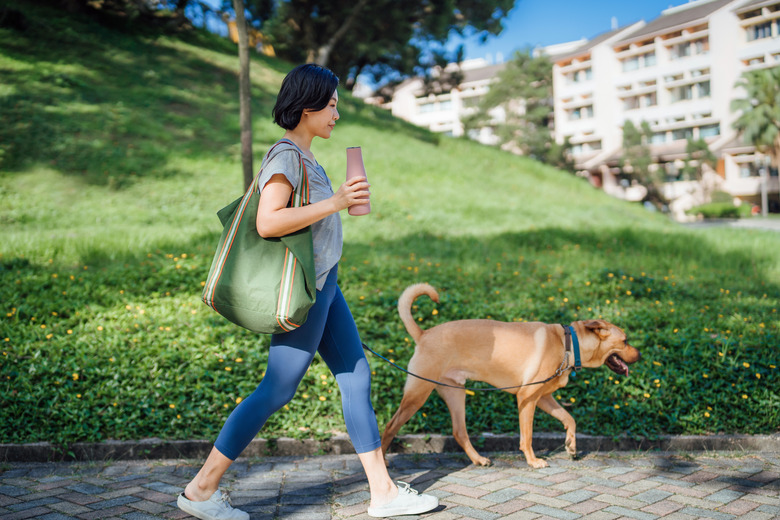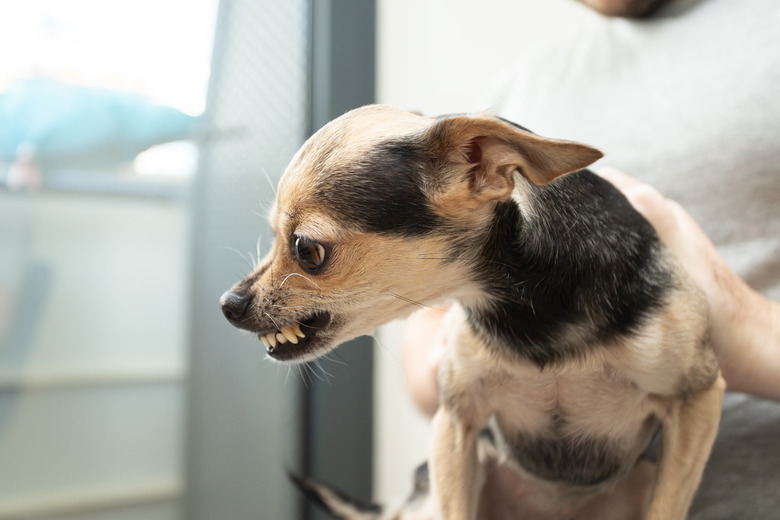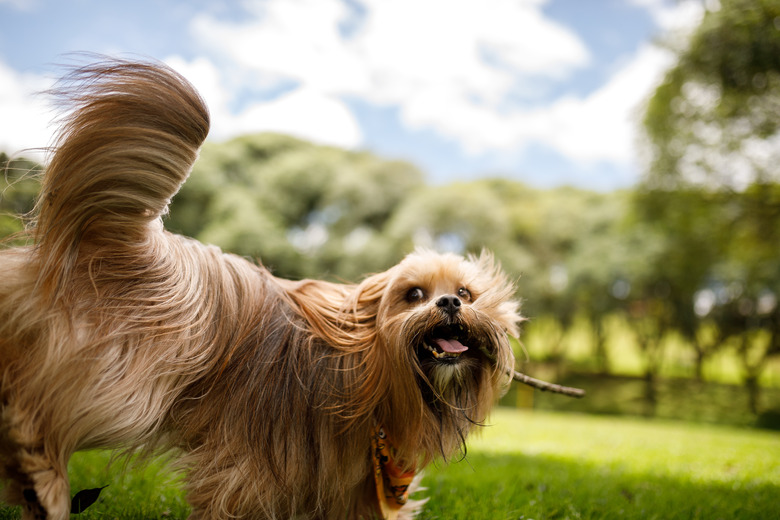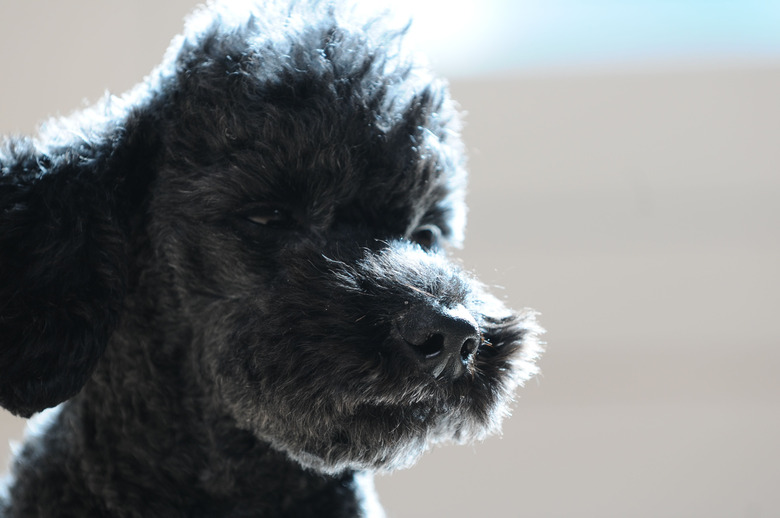Canine Communication: How To Read Your Dog's Body Language & Decipher What They Want To Tell You
Do you ever wish your dog could speak to you? Almost everyone does! Would you be surprised to learn that your canine pal is already speaking to you all day, every day? Maybe "speaking" isn't the best term, but they are communicating with everyone around them through body language, which is how dogs "talk" to one another.
You're probably already familiar with some common body language cues, like a wagging tail, or raised hackles. There are also many other messages our dogs are signaling to us all the time. Read on to learn more about your dog's first language, how they use their bodies to communicate with us every day, and how to read dog body language.
Body posture and dog communication
Body posture and dog communication
One of the broadest and most general ways to get read your dog's mood, temperament, or comfort level is to take stock of their overall posture. Like people, dogs will position their bodies in a certain way to signal specific things to those around them, some intentionally, and others subconsciously. A comfortable dog will use canine body language to display a "neutral" posture, meaning they won't appear stiff. They might have an alert or curious demeanor about them, but there are no signs of arousal or agitation, and they won't be terribly fixated on what's in front of them.
A dog who's less comfortable in their surroundings will make themselves physically smaller, and will often crouch, avoid eye contact, lower their ears, and might even try to turn around and face the complete opposite direction of what's in front of them. These traits are commonly seen on dogs who are being handled by children, or when they're being forced to engage in some exchange that they just aren't feeling at the moment, like having their photo taken, or wearing a costume. Some dogs may even raise a front paw, which signals appeasement, and others might even lie down and fully expose their bellies, which is an overt sign of submission. All of these body posture cues are done to tell those around them that this dog doesn't want any trouble, and isn't a threat in any way.
Another uncomfortable body signal, this one on the total opposite end of the spectrum from the previous example, is when a dog attempts to make their bodies look bigger, which is what many dogs do when they feel threatened and defensive. Raised hackles are one sure sign of dog body language that an excited dog is telling you to keep your distance, and this neck-expanding move may be accompanied by barking, snarling or baring teeth, and raised ears. This will be a stiff, aroused body posture, and can indicate an impending fight, depending on the circumstances.
What does a dog’s tail tell us?
What does a dog's tail tell us?
You've surely noticed that your dog wags their tail when they get a treat, see someone they love, or get to enjoy a favorite activity. Many people associate a wagging tail with a happy dog, but tail wagging only indicates that a dog is excited, which could be for a pleasant reason, or a not-so-pleasant one. If you're unsure what a wag means, your you're trying to read a dog who you aren't very familiar with, consider the body posture cues listed above to get a better idea of what that wagging tail is really saying.
A dog's tail doesn't have to be wagging to be telling us something, although the general rule is that the faster the tail wag, the more aroused the dog. Dogs will position their tails in specific ways when they want to indicate their mood and overall comfort level in a given situation. A tail that's upright when combined with a tense posture or other uncomfortable signals, like raised hackles, signifies an assertive dog, while a tucked tail, which is often seen in slouching or cowering dogs, indicates submission or even fear. The position of a tail will, of course, be relative to your dog's body, and some dogs always have their tails sticking up, like pugs, for example. Take note of your dog's tail when they're in a relaxed, neutral state, which will help you recognize when their tail is higher or lower than usual.
How dogs use their faces to communicate
How dogs use their faces to communicate
You've probably heard that you shouldn't look directly into a dog's eyes, but is that always true? And what does it mean to them if we were to make eye contact?
Generally, dogs and their human counterparts do make eye contact frequently, as a way to signal needs and directions, or simply as an act of bonding. Some people believe that making eye contact with a dog will be taken as a threat by the dog, and while it is true in certain cases (especially if the dog is displaying signs of arousal as listed above,) it's not always a rule to live by, so don't worry that looking at your dog will cause them to attack.
In fact, being aware of their eyes can tell us a lot about what's going on in their heads. Soft eyes on a dog are usually joined with a neutral body posture and tail position—they're not squinting or wide open. Squinting eyes can indicate submission with some dogs, and you may have noticed this if you've ever caught your dog doing something naughty, like digging in the trash. Wide eyes will usually appear on dogs in an aroused state, as will a more stern, focused glare.
Whale eye is a really important body language cue to be aware of on your canine companion, and is one of the easiest-to-read dog behavior signs to spot. The whale eye describes when you can see the whites of your dog's eye because they're moving their heads away from what's in front of them, while still not taking their eyes off of it. This is sometimes a sign of fear, but more often a signal that your dog is nervous or uncomfortable. This resembles a side-eye, which can make for a funny moment or photo op, but when you see your dog doing this it means that they're not sure about the situation they're in.
Ears and teeth in dog communication
Ears and teeth in dog communication
Dogs don't use their mouths to communicate as much as other areas of their bodies, but sometimes, you can see them giving off body language signals with their teeth or tongues. Baring their teeth could be the sign of an aggressive dog, or a fearful dog, as many dogs "smile" in an effort to submit. As with all of these canine communication cues, taking stock of a dog's overall demeanor, including their posture, tail position, and facial expression, will go a long way in helping you determine what your dog is saying.
Similar to the tail, the position of a dog's ears will, in many cases, tell us a lot about what they're communicating to those around them. Displaying stiff, perked-up ears is something dogs do to focus in on a sound, and can indicate arousal. Ears that are pressed back flat against the head are usually signs of a fearful or anxious dog, or may even be a signal that a dog is feeling threatened and defensive.
The bottom line
The bottom line
Understanding dog body language can really help pet owners meet the needs of their dogs, and keep themselves and those around their dog safe. Often, dogs are blamed for unprovoked attacks, when the warning signs were there all along, so it's important to be able to recognize and understand common dog body language cues. Generally, signs of stress include crouching, a down-turned tail and ears, whale eyes or avoiding eye contact, and a general sense that your dog is trying to get away from a situation with their entire body. Possible signs of aggression can include raised hackles, a general stiffness in the whole body, up-turned ears and tails, and locked eye contact. You'll know your dog is likely relaxed and unbothered when they display a neutral position in their bodies, tails, and ears, and express being in a secure emotional state by engaging with their surroundings.
Obviously, if you feel unsafe around a dog for any reason, remove yourself immediately, as well as your dogs, children, or anyone else nearby. And never push a dog past their comfort level when you've seen them display signs of fear, anxiety, or especially aggression.






